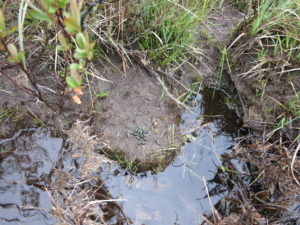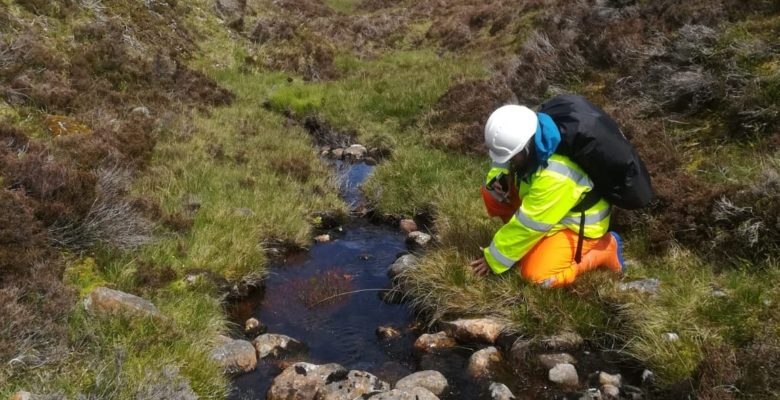Protection
Water voles are fully protected under Schedule 5 of the Wildlife and Countryside Act 1981 and are a priority UK Biodiversity Action Plan (JNCC, 2008) species.
Despite being categorised as “least concern” by the IUCN Red List of Threatened Species (IUCN, 2016), water voles are a significant part of riparian ecosystems. As well as forming an important dietary component of many species, their browsing and burrowing behaviour in wetlands creates disturbance and, in turn, micro-habitats for plants and invertebrates. The loss of these micro-habitats has resulted in wider ecological impacts for associated species (Gow, 2015).
Surveying
At EcoNorth, we have a specialist team that has been trained in water vole survey techniques, in order to establish the baseline populations of water vole in an area.
When searching for water vole field signs, there are several identifiers to look out for:
- Burrow entrances.
- Cropped lawns near burrows.
- Feeding stations.
- Runways in the vegetation.
- Footprints.
- The distinctive ‘plop’ sounds of water voles entering the water.
- Latrines showing discrete piles of greenish tick-tack sized droppings that don’t have a nasty smell (as shown below).

Reintroduction
The European water vole (Arvicola amphibius) has been in major decline in the UK since the 1960s, as a result of inappropriate wetland management, habitat loss and the introduction of the non-native predator, the North American mink.
To combat this, there have been many water vole reintroduction initiatives in the recent past. EcoNorth is particularly proud of the ‘Restoring Ratty’ reintroduction programme, run by Northumberland Wildlife Trust in Kielder, in which team members have actively participated. The aim of this reintroduction is to encourage the dispersal of water voles in order to link the Kielder water voles with South Tyne and Pennines populations.
For more information, please click here.
References
Gow, D. 26 (2015) ‘Restoring Ratty to his Riverbank’ Strachan, R. British Wildlife 3.
IUCN (2016) ‘Arvicola amphibius’ Batsaikhan, N. The IUCN Red List of Threatened Species 2016: e.T2149A22358646. [Online] Available at: http://www.iucnredlist.org/details/2149/0: IUCN.
JNCC (2008) ‘Review of UK BAP targets, water vole. ‘. Joint Nature Conservation Committee website. http://jncc.defra.gov.uk/_speciespages/115.pdf.

